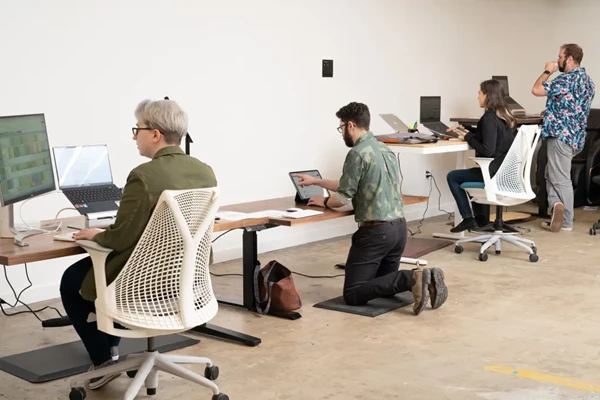Desks vs. discomfort: Does your workstation secretly sabotage you?
Beyond laziness: Understanding the science of procrastination / Mental health training for managers lowers absenteeism, improves performance
It may be an exaggeration to assert that "sitting is the new smoking," but substantial research suggests that individuals who are sedentary encounter more health challenges than their active counterparts.
For instance, office workers who are primarily seated during their eight-hour workdays are more likely to experience symptoms such as daytime exhaustion, hypertension, and musculoskeletal discomfort than those who are less sedentary. Despite the fact that standing desks have been discovered to alleviate physical symptoms and increase worker productivity, there are still questions about the optimal use of the primary types of workstations - traditional, sit-stand, or stand-biased - to promote physical activity among employees and prevent health issues.
To address these inquiries, a team of researchers from the Texas A&M University School of Public Health monitored the computer usage and activity levels of 61 office workers for a period of 10 days in order to assess any discomfort and suggest potential solutions.
Tricia Lynn Salzar, DrPH, Kaysey Aguilar, PhD, Matthew Lee Smith, PhD, Adam Pickens, PhD, Gang Han, PhD, Mark Edward Benden, PhD, and doctoral student Grace Anderson conducted the study, which was published in IISE Transactions on Occupational Ergonomics and Human Factors.
"What makes our research unique is our use of computer utilization as a possible indicator of, and proxy for, work productivity in all three workstation types," Aguilar stated.
The team monitored 79 full-time, adult office workers at a major university from 2019 to 2020 for the study. Participants were assigned to one of three study groups based on the type of workstation they used (stand-biased, sit-stand, or traditional). The control group consisted of participants who used traditional seated workstations.

Stand-biased workstations were defined as a drafting stool or chair with an extended cylinder, a fixed work surface at approximately standing elbow height, and a drafting stool or chair. Desktop units and those with a fully height-adjustable work surface that are paired with a traditional office chair were referred to as sit-stand workstations.
The researchers collected demographic data on employees and information regarding their use of office equipment, including keyboard trays, monitor arms, footrests, and anti-fatigue mats, at their workstations. Additionally, they gathered information regarding the duration of time that employees spent standing at their workstations and their utilization of a stand-biased or sit-stand workstation. Participants were questioned regarding their discomfort in the following areas: the neck, upper back, lower back, shoulder, wrist and hand, hips, knees, and ankles and feet.
The team employed concealed and silent data-logging software to monitor the use of participants' workstation computers in order to assess productivity. Participants employed an activity sensor for a single workweek to quantify and measure their energy expenditures and activity levels. The data from each participant's files was aggregated and downloaded to guarantee a minimum of 10 workdays of computer use. Statistical analysis software (SAS®) was employed to analyze the data.
"We found no significant difference in the number of keyclicks between the three groups, but the stand-biased group had a significantly higher word count and more errors than the traditional group," according to Aguilar. "In addition, the 24-hour activity data revealed that the stand-biased group had significantly more standing time, less sitting time and fewer transitions per hour compared to their traditional counterparts."
In terms of discomfort, 65 percent of all participants reported experiencing neck discomfort, while 80 percent of the traditional workstation group reported lower back discomfort, in contrast to 51.7 percent of the stand-biased group.
Despite the fact that the stand-biased and sit-stand groups stood more and sat less than the traditional group, the difference in outcomes was not statistically significant. Furthermore, the traditional group transitioned from seated to standing postures significantly more frequently, whereas the stand-biased group expended more energy.
"The bottom line is that the risk of health issues from sedentary work can be alleviated through alternative desk options, like sit-stand or stand-biased workstations," according to Aguilar. "These are win-win solutions because they benefit worker's health while maintaining the high productivity employers expect."
Journal Reference: Tricia Lynn Salzar, Kaysey N. Aguilar, Matthew Lee Smith, Adam Pickens, Gang Han, Grace Anderson, Mark E. Benden. Stand-Capable Workstations Reduce Occupational Sedentary Time Among Administrative Workers. IISE Transactions on Occupational Ergonomics and Human Factors, 2024; 1 DOI: 10.1080/24725838.2024.2362720
End of content
Không có tin nào tiếp theo
